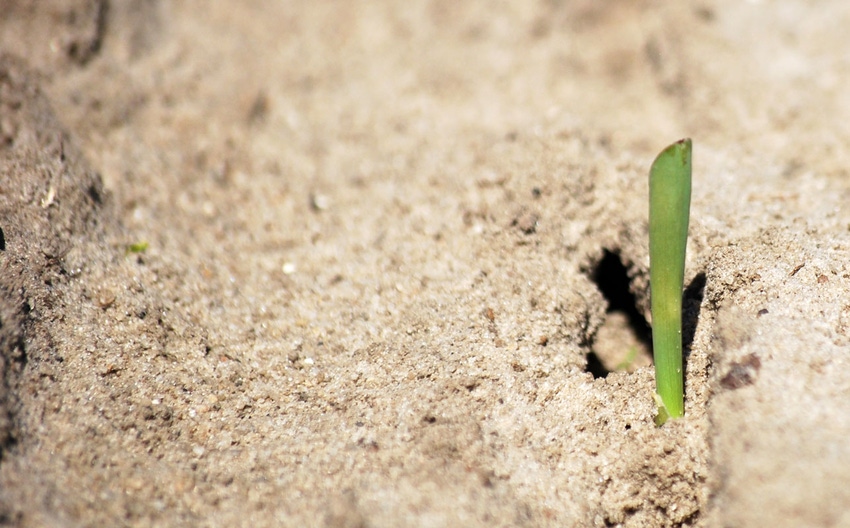
Given increased acres and a return to trend yields, agricultural economists say the corn outlook for 2020 is for a potential bumper crop that could drive down market prices while creating huge stockpiles that could take years to reduce.
This could create headaches for many. But about 200 farmers who attended Clemson University Cooperative Extension Service’s 2019 State Corn and Soybean Growers Meeting learned budgets can help relieve some of this stress.
Guest speaker Mark Welch, a professor and Extension economist from Texas A&M University, said United States farmers produce about 40 percent of the world’s corn. If the weather remains normal, farmers are expected to expand their corn plantings by about five percent for a total of 94.5 million acres. Corn production is expected reach 15.55 billion bushels, topping the 2016 record of 15.15 billion bushels. If this happens, stockpiles will soar.
“Corn demand has been soft in the U.S.,” Welch said. “Global corn stocks are tight and are getting tighter.” Welch said farmers should create and follow budgets. “You will need to get your production costs down and lock in profitable prices when you see them,” he said.
Budgets
To help South Carolina farmers build budgets, the Clemson Extension Agribusiness Team at the Sandhill Research and Education Center (REC) has created enterprise budgets to use as guides for planning on individual farms. These budgets are tools for projecting costs and returns for crops and livestock, said Nathan Smith, a Clemson Extension economist and agribusiness production professor. Information can be found at http://bit.ly/ClemsonEnterpriseBudgets.
“These budgets are just general guidelines,” Smith said. “Each farm should develop budgets based on its specific situation.”
The budgets continually are revised. Check with your local county agent for updated versions.
Attendees also learned about irrigation and agronomic strategies to improve yields, net returns and water-use efficiency.
“Ag water problems begin when the well is turned on,” said Jason Krutz, an irrigation specialist with the Mississippi State University Cooperative Extension Service. “Irrigation is important for higher yields, stable yields and higher profits. But aquifers only have so much water in them. We need to determine how to make higher yields with less water.”
Michael Plumblee, a Clemson Extension precision agriculture specialist and assistant professor at the Edisto REC in Blackville, said about 13 percent of South Carolina row crop acres are irrigated. Cost is one impediment. A typical center pivot system can exceed $50,000. Add pumping infrastructure and recurring annual costs associated with pumping water, and many farmers can’t justify the added expense in times of tight profit margins.
“Irrigation is a tool that growers can use to improve yield and quality especially in dry years,” Plumblee said. “It can benefit growers by helping them achieve certain yield goals each year which ultimately helps with budgeting and year-to-year consistency.”
Crop yields do not always improve when irrigated, but if water is a limiting factor, irrigation “definitely” will help, he said. In addition to helping increase yields, irrigation also can help improve water-use efficiency by applying water to the crop at the correct time.
Early Beans
In addition to corn, attendees also learned about managing early-maturing soybeans in the Carolinas. Rachel Vann, Extension soybean specialist from North Carolina State University, talked about North Carolina growers who are successfully producing early-maturing soybeans.
“Growers are becoming increasingly interested in producing earlier-maturing soybeans,” Vann said. “These soybean maturity groups typically have an indeterminate growth habit, which allows simultaneous vegetative and reproductive growth over several weeks. We have growers who can find a nice premium for September delivery.”
Early-maturing soybeans can be planted in mid-April and harvested in mid-September in North Carolina. Soybeans typically are planted in South Carolina from May 10 to July 11 and harvested from Oct. 20 to Dec. 30. Proponents claim planting earlier-maturing soybean varieties can reduce the potential for harvest delays. Clemson Extension soybean breeder Ben Fallen from the Pee Dee REC said the biggest issue he’s found with growing early-maturing soybeans in South Carolina is harvest timing.
“Early maturing soybeans will not wait around to be harvested,” Fallen said. “Seed quality will go down in a hurry, especially if the weather doesn’t cooperate with harvest. Also, sometimes with early beans, they are setting pods during the heat of the summer and you can run into problems if you don’t water them at the right time.”
Still, some farmers have been successful growing early-maturing soybeans.
“I think them being able to grow early-maturing varieties has a lot to do with management,” Fallen said. “That’s why this research is important.”
Vann and Fallen are researching row-spacing in Dillon County. Narrower rows are producing higher yields, Vann said.
Regardless of the corn or soybean variety grown, proper soil nutrition is important. Jim Camberato, a Purdue University agronomist and former Clemson agronomist stationed at the Pee Dee REC, said proper pH, or acidity level, is fundamental.
“Liming soil is important,” Camberato said. “Most South Carolina cropland soils require lime to correct soil acidity and, then, maintain the pH level for the crop or crops being grown. This is why it is important to get soil tested before planting.”
To help growers make better soil nutrient management decisions, Bhupinder Farmaha, a nutrient management specialist housed at the Edisto REC, is working to update soil additive recommendations for South Carolina.
This was the third year for the State Corn and Soybean Meeting. Meeting coordinator David Gunter, an Extension feed grain specialist housed at the Edisto REC, said this meeting differs from other state meetings in that Clemson partners with specialists from other states to provide South Carolina farmers with valuable information
“I believe it’s a good idea to bring in specialists from other states so that our farmers can hear from someone with different experiences,” he said. “Corn and soybeans are major row crops in South Carolina and we need to provide as much information as we can to help our farmers grow profitable crops.”
Corn and soybeans are major contributors to the South Carolina economy. Figures from the United States Department of Agriculture National Agricultural Statistics Service for South Carolina in 2018 show 310,000 acres of corn earned more than $173 million, while soybeans earned nearly $100 million.
About the Author(s)
You May Also Like






